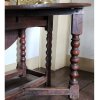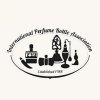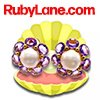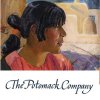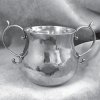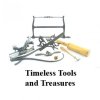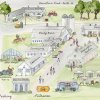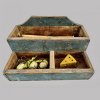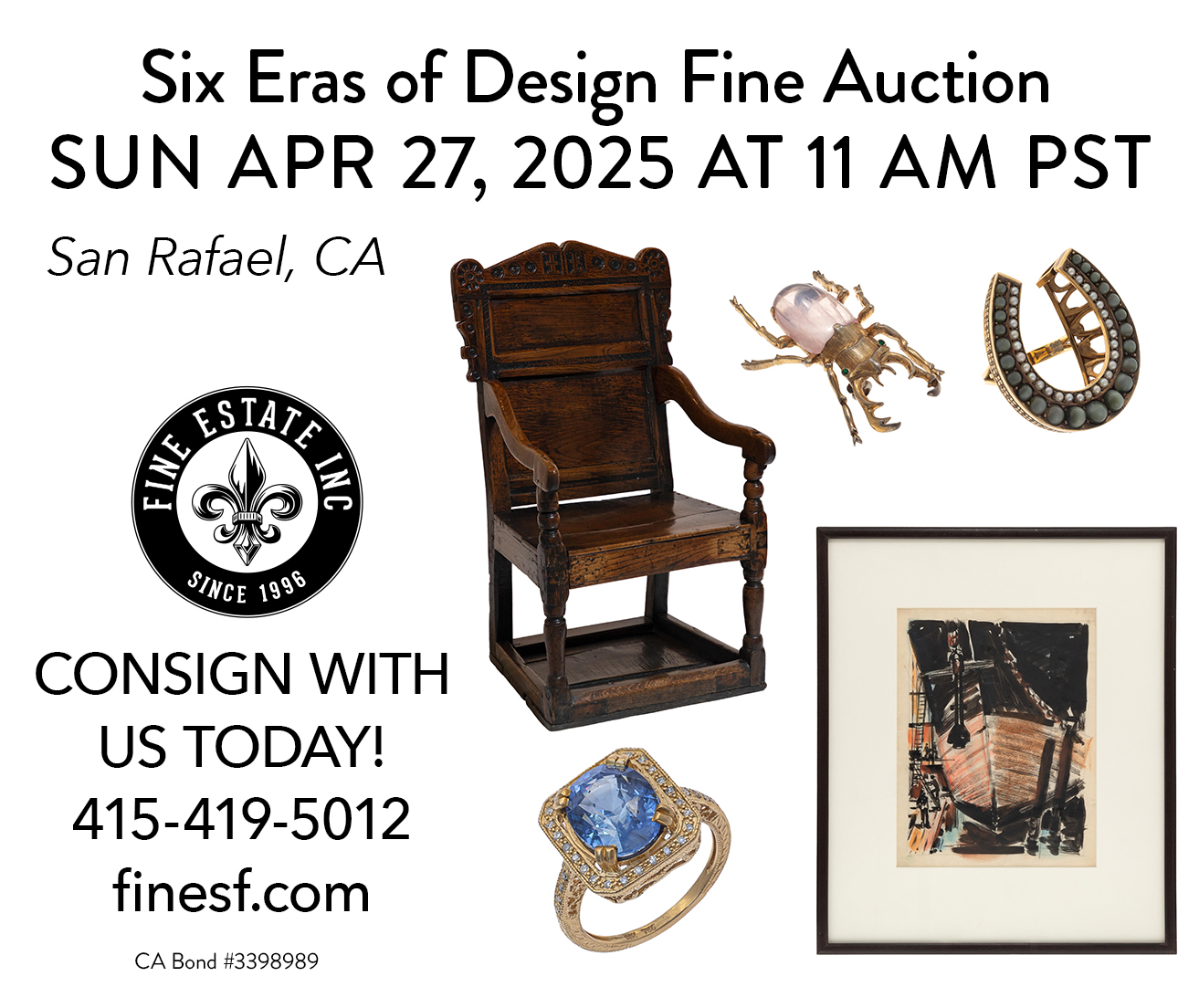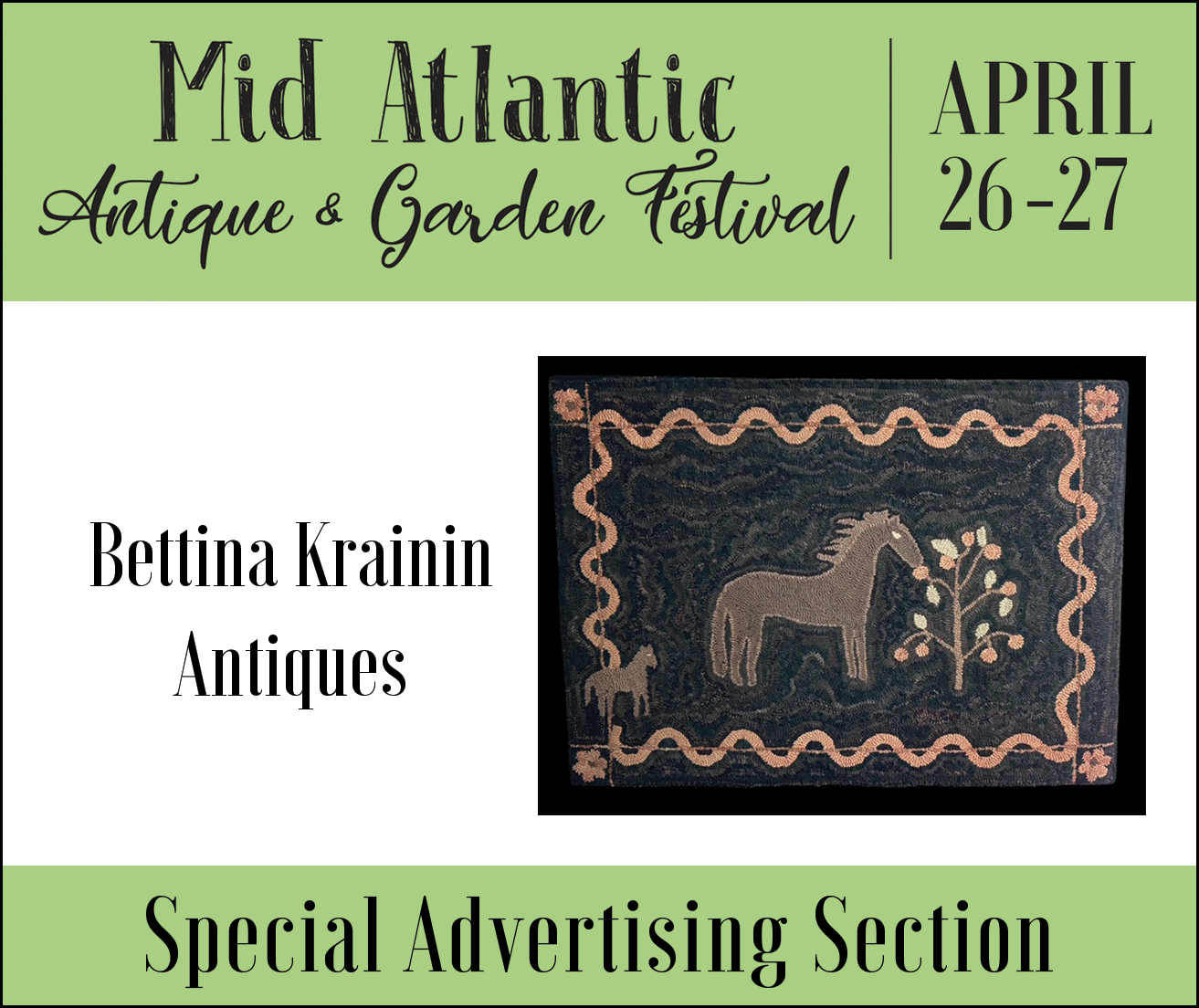The 2020 Ceramics Fair
January 26th, 2020
The New York Antique Ceramics Fair, New York City
Eleven dealers set up shop at the New York Antique Ceramics Fair on the third floor of the Bohemian National Hall, January 23-26, and did plenty of business. The fair charges no admission. It opened with an invitation-only preview party for museum curators and advanced collectors at 4 p.m. on Wednesday afternoon during the event-filled New York Americana Week. An advertisement in the New York Times increased attendance in the four days following. The second edition of this redesigned ceramics fair was deemed a success.
“This show had lots of energy,” said first-time ceramics fair exhibitor Samuel Herrup of Sheffield, Massachusetts, who generally shows furniture and some choice American redware, stoneware, and English pottery at general antiques shows. “The crowds were bigger every day. People stayed two hours, and some stayed four or five hours, and some came back a second day,” Herrup said in amazement.

Samuel Herrup of Sheffield, Massachusetts, showing at the New York Antique Ceramics Fair for the first time, offered redware and stoneware from New York, New Jersey, Pennsylvania, and New England. He sold the large Bennington churn on the bottom row and some creamware, salt-glazed wares, and delft.
All the dealers set up in one big spacious room with plenty of chairs for people to sit down with dealers and talk about what they had to sell. It seemed more like a book fair, where collectors spend all day, than a general antiques show. Unlike the last few editions of the long-running New York ceramics fair, this year’s event included no contemporary artisans.
The scholarly dealers had a lot to say. They want to educate the broader public. Sales were made to collectors and to museum curators, and other curators took memos and promised to get back to the dealers when they raised funds for purchase. Garry Atkins from London said he did most of his business in the first hour but surprisingly made a few other sales during the run of the show. Martyn Edgell, the only other dealer from the U.K., said he sold a lot of English pottery, mocha, and creamware, plus a large Staffordshire bowl with a covered wagon painted on the outside and a scene of a farmer and his dog and the farmhouse on the inside. He sold it to a museum, and another museum bought a collection of German stoneware.
Léon-Paul van Geenen from Delft, the Netherlands, sold a Dutch Delft five-piece mantel garniture to a New England house museum. He also sold several tobacco jars, a Portuguese plate, and more. “I had a good show,” he said.
This ceramics fair was a first show for Pennsylvanian Harwood “Woody” Johnson of circa 1775, who has a full-time day job but in  October decided he wants to be a part-time dealer in order to share his enthusiasm. “I gave out lots of cards and sent off a lot of pictures to museums, and made one sale,” he said. His stand with just seven pieces of Wedgwood jasperware was educational. He posted a quotation from the official account of the mission King George III sent to the Qianlong emperor in an attempt to open trade with China in 1792. Among the gifts, which included scientific instruments, Argand lamps, firearms, clocks, and textiles, were six Wedgwood jasper vases. The quotation from Sir George Staunton’s account of how the gifts were received reads, “All eyes were, however, fixed on the vases, which were among the finest productions of the late Mr. Wedgwood’s art. Of porcelain every Chinese is a judge. These specimens of the beauty of European manufacture were universally acknowledged and extolled.”
October decided he wants to be a part-time dealer in order to share his enthusiasm. “I gave out lots of cards and sent off a lot of pictures to museums, and made one sale,” he said. His stand with just seven pieces of Wedgwood jasperware was educational. He posted a quotation from the official account of the mission King George III sent to the Qianlong emperor in an attempt to open trade with China in 1792. Among the gifts, which included scientific instruments, Argand lamps, firearms, clocks, and textiles, were six Wedgwood jasper vases. The quotation from Sir George Staunton’s account of how the gifts were received reads, “All eyes were, however, fixed on the vases, which were among the finest productions of the late Mr. Wedgwood’s art. Of porcelain every Chinese is a judge. These specimens of the beauty of European manufacture were universally acknowledged and extolled.”
Johnson believes that one of the vases sent to China was like one he exhibited, a 15½" high snake-handled jasper vase, because it is similar to the only illustration in the 1787 English and 1788 French editions of the Wedgwood firm’s trade catalog. A copy of the 1787 catalog was for sale for $5100. The vase was $31,000.


This copy of Wedgwood’s 1787 trade catalog, the last published in his lifetime, illustrates a vase similar to one Harwood “Woody” Johnson of circa 1775 had for sale. He believes the illustration depicts the vase sent to the Chinese emperor in 1792 in an attempt to open trade with China. The catalog was $5100; the vase was offered for $31,000.
Johnson also offered a large (10" x 7½") Wedgwood and Bentley blue-and-white jasperware medallion of Joseph Banks, the “father of Australia.” The 25-year-old botanist sailed with Captain James Cook in August 1768 to observe the transit of Venus across the sun and to search for the unknown southern land. After observing the transit of Venus in Tahiti, they explored the coast of New Zealand before sailing westward in March 1770 to Australia. The large portrait plaque of Banks modeled by John Flaxman in 1779 is one of three known. One has been in the British Museum since 1887, and another was acquired by the Australian Museum in Sydney in the early 20th century. The one Johnson offered is the only one in private hands. It was $110,000. Johnson hopes it will be acquired by an Australian in the vicinity of Botany Bay, which was named for Banks. “If the younger generations like stories, ceramics have stories to tell,” said Johnson.
The New York Antique Ceramics Fair is managed by Michaela Boruta of Boruta Consulting, New York City. She said it could be expanded to a second room on the third floor of the Bohemian National Hall if three or four more dealers wanted to exhibit. “The show is a beautiful collaboration,” she said. “The exhibitors’ cooperative tells me the way the fair will be.” There is room at this show for a dealer in Chinese export porcelains.
Small focused shows where visitors can linger seem to be the antidote to crowded aisles or online shopping and offer a recipe for a successful antiques show.
For more information, visit the website (www.nyceramicsfair.com).

Sam Herrup said this jar made in southern Maine or Vermont, 1820-40, is the best piece of redware he had ever owned. He asked $48,000 for it.

Sam Herrup asked $7500 for this Dutch Delft large rosewater dish, 1675-80, attributed to Samuel van Eenhoorn. There are no chips or restorations.

J. & E. Norton stoneware crock, stamped “J. & E. Norton / Bennington VT,” $28,000 from Sam Herrup.

Léon-Paul van Geenen of Delft, the Netherlands, asked $9000 for this pair of Dutch Delft candlesticks decorated in the Chinese manner with a red rim.

Garry Atkins of London asked $18,000 for this John Simpson slipware dish, which has been repaired.

Elizabeth Chip’s marriage cup, dated “1676,” from the Rous Lench collection, $30,000 from Garry Atkins.

A pair of colanders with underplates, circa 1740, Lampetkan factory, $9500 from Léon-Paul van Geenen.


Martyn Edgell Antiques Ltd. from the U.K. offered this large Staffordshire bowl painted with a covered wagon on the exterior and a farm scene on the interior. It sold to a museum.

Alan Kaplan of Leo Kaplan, Ltd., New York City, asked $47,500 for this large circa 1800 sponge-decorated Leeds horse. It sold.

A.J. Warren of Maria & Peter Warren Antiques, Monroe, Connecticut, asked $8200 for this George Jones & Sons Ltd. majolica ewer, circa 1875, 17½" high, modeled after Bernard Palissy, a 16th-century form, decorated with lizards and a looped snake handle. There is restoration to the handle.

English salt-glazed teapot with polychrome enameling, with restoration to tip of spout and bottom of handle, $3300 from A.J. Warren of Maria & Peter Warren Antiques.

Mark Allen of Laconia, New Hampshire, asked $5500 for this Dutch Delft flower holder, circa 1700.

Very rare English delft bank, $27,500 from Mark Allen.

Lee Bradshaw of Etruria Antiques Gallery, Melbourne, Australia, asked $15,000 for the rare documentary Bow porcelain plate, 1770, painted in blue underglaze with the monogram “RC” in a floral cartouche, and with an underglaze blue inscription on the underside, “Mr. / Robert Crowther, / Stockport / Cheshire, / January 1770.”

Large (9" high) named and dated creamware teapot and cover, 1778, cylindrical form, with a straight tapering spout and overlapping twisted handle with molded foliate terminals, inscribed “John Parker. / Nettlebed. Oxfordshire. / 1778.” within an oval wreath and trellis border, on a pavilioned island ground, hairline to the reverse, small chips under cover, spout, and base. The teapot and cover were $9800 from Robert Walker of Polka Dot Antiques, Waccabuc, New York. Photo courtesy Polka Dot Antiques.

The open plan without crowded aisles and with plenty of chairs created a comfortable space for viewing and conversation. The only criticism was that dealers in Chinese export porcelain and glass were missing.

Inscribed 9¼" tall creamware transfer-printed and enameled jug, 1790-1800, the swelling cylindrical body applied with a black transfer print of a mill, with colored enamels, lettered below “Makin Mill,” the reverse with a manor house among trees, with figures walking by water in the foreground, hand-painted initials “H, R & M” below the spout, with a printed wreath, printed below “Success to the Cotton Manufactory,” minor surface issues, scratches, and a very fine stress crack, $4200 from Robert Walker. Walker said that by 1762 Makin Mill was being used for fulling, a step in the production of woolen cloths. He added, “The large firm of Peel, Yates & Co. took over the water-powered mill in 1780, converting it to the first major commercial cotton-producing venture in the town.” He said the cotton probably came from Egypt, not the U.S. Photo courtesy Polka Dot Antiques.
Originally published in the April 2020 issue of Maine Antique Digest. © 2020 Maine Antique Digest







